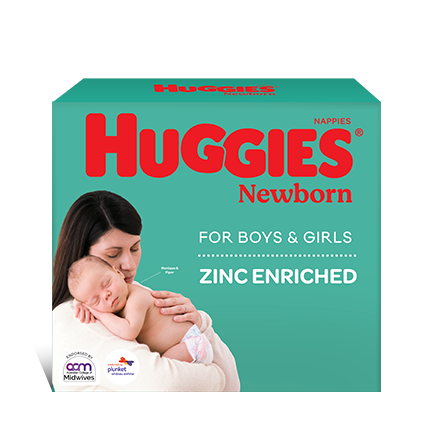Meal habits and health
A child between the ages of 1 and 5 will generally consume three main meals and two snacks a day while some children may eat smaller but more frequent meals. This is also normal. It’s important to remember that we are all different; if your child doesn’t eat in the same pattern as you do, there is no problem with this. Most children require food every three to four hours nestled nicely into their daily routine. Delaying a meal or snack only 10 minutes past the usual time can cause hunger-induced irritability, which may result in poor choices of foods in order to calm a cranky child.
Don’t be at all surprised if, at around 12 months, your child – who is usually a great eater – slows down in their growth rate and begins to show signs of indifference to certain foods or even gets fussy.
Most healthy children will not starve themselves. Remember, your child’s growth and development are key indicators of how they are getting on, rather than the quantity of food they eat at each meal. And importantly, keep in mind that it’s what you offer a child to eat that is important. After all, you do the offering and they do the eating.
Tips on healthy eating for infants and toddlers
These are some general suggestions that may help establish a balanced, healthy and nutritious diet, and develop healthy attitudes toward meals and food:
- Make the transition from soft foods to chunks by about 9 months and encourage self-feeding when baby is able to in order to help with dentition and avoid fussy eating later.
- Move meal habits toward three meals and two snacks per day by 9-12 months.
- Offer small amounts of food frequently.
- Provide easy access to healthy snacks.
- Set up predictable routines around food – sitting at the dinner table together and talking during meals.
- Create variety of meals and foods – don’t give up on foods your child appears to dislike; instead, keep offering it even in small quantities. You could be surprised one day!
- Provide foods that your child likes and introduce some new ones.
- Offer simple but healthy meals, providing an opportunity for your child to become familiar and comfortable with food.
- Create an association with food that is more than just about eating. Make it fun, enjoyable and use praise.
- Try to be creative in the display of food on the plate. Happy faces made with mashed potatoes and a couple of peas can be fun!
- Always be a good role model. In the early years, your child will learn most from modelling the behaviours of those closest to them.
- Avoid offering your child junk foods for as long as you can. It will make your life much easier and your child will be healthier.
- Enlist the support of those closest to your little one – grandparents, aunties, uncles, carers etc. to support the eating habits you want to engender.
Food and nutrition
View all videosWhy won’t my toddler eat his/her meals?
Toddlers refuse foods for various reasons: disinterest, preference for self-feeding, teething, illness, and sometimes dietary habits earlier on. Infants fed on soft foods for too long can become quite fussy; so too can bubs feed predominantly on sweeter foods such as fruit at the expense of bitter foods such as vegetables.
Toddlers have small tummies so they can easily fill up on snacks, milk and other drinks. Avoid feeding your little one too close to a main meal, avoid junk foods, and offer things like milk after a meal. It is recommended to leave 1.5 to 2 hours between snacks and meals.
Some toddlers don’t adhere to our views on dietary habits, preferring to get most of their nutritional needs in just a couple of meals and pick the rest of the day. Some even have a main meal at lunch and barely touch their dinner. These are all quite normal and ultimately it is a case of ‘you can lead a horse to water?’ Never force a child to eat. This is likely to induce a long-lasting negative association with eating. Just keep offering healthy foods at the usual times and allow your little one to choose from these selections. Be patient, persistent and consistent.
What can I do to encourage healthy eating?
One of the really valuable tools you have as a parent is control over the environment – what happens in the home, how it happens, and its regularity, where it happens and who is involved. These are all, as Doctor Phil says, ‘currency’ that you can use to keep things on track.
You run the kitchen, so use it! Get the kids involved in food preparation and cooking. Enlist your little helpers in peeling, cutting (with assistance), pouring, stirring, dishing up, setting the table and so on. Always supervise and ensure that the environment is safe. Teach your little one about cleanliness as you go. My son gags at the sight of a green vegetable, but he helps me grate the zucchini we put in a cake, we mix it, pop it in the oven and he utterly annihilates it once it is baked.
Growing your own vegies is another fantastic way of making food fun and a voyage of discovery for kids. Even if you don’t have a garden, there are loads of things you can do. Most children will get a kick out of seeing a carrot or potato head sprout or mung beans split open. Be inventive and go the extra step of involving the children by using an old toy trolley, unloved bucket or a decorated planter as your pot.
Find out more about gardening with kids
Other things to keep in mind: be consistent, avoid distractions (such as the TV and toys), be persistent and try to be relaxed about this phase. You may also need to be cunning with how you get the ‘good stuff’ in. Importantly, never give up, and always offer healthy food. Once you start with the junk food the flood gates open.
Fluids
At around 6 months of age, it is best to use feeding cups and lidded cups for liquids other than breast milk or formula. Allowing your child to drink fluid other than water from a bottle may potentially increase their risk of cavities from the sugars which bacteria love to munch on. Keep an eye on your little one if they are very attached to their bottle as the continual washing of their teeth with milk sugars isn’t ideal.
Always offer your child regular drinks throughout the day. Their thirst reflexes are still developing, so they may not know they are thirsty. This, in turn, can lead to constipation.
Additionally, while milk is important for calcium and protein, an excessive intake of milk (or juice) can displace food and thereby reduce the nutrients that your child is getting over the course of the day. Uh-huh, I hear you say, so this is why my child hardly seems to eat but will gulp down milk by the bottle!
Fruit juices
So many of us believe that if we give our children a little fruit juice, this will ensure they are getting vital nutrients such as vitamin C. While fruit-based drinks and even milk alternatives such as soy, oat and rice can be added to a healthy diet (in appropriate amounts), they can present problems. One of the big issues is that juices (and even, to a certain degree, too much milk) displace food, which can lead to nutrient imbalances. Promoting healthy drinking habits by encouraging your children to drink water, or age-appropriate amounts of milk, is far better.
Children between the ages of 1-6 years should not drink more than 150ml a day (roughly half a cup) over two sittings.
Reading food labels for sugar content
Common sugar (table sugar also called sucrose) is the big guy in tooth decay as well as potentially contributing to other illnesses such as diabetes and obesity. Monitoring your child’s intake of sugar is a good habit to get into.
Sugar is a notoriously ‘hidden’ ingredient in many foods; it can turn up in foods you may not expect – such as salad dressings, savoury biscuits, tomato sauce, baked beans, canned and packet soups, canned vegetables, breakfast cereals, yoghurt and fruit juices.
A 2015 survey of 34 breakfast cereals aimed at children found that:
- The majority of children’s cereals have too much sugar and/or too little fibre.
- 12 out of 34 children’s cereals were more than 30% sugar
- Only two of the cereals were top rating – Sanitarium Weet-Bix for Kids and Freedom Foods Rice Puffs, as both have a reasonable amount of fibre, and they contain minimal sugars and sodium.
Source: May 2015 Choice Magazine, Australia
Other offenders include soft drinks, cordials, jams, ice-cream, confectionery and cakes. In particular, soft drinks should be avoided as they have an average of approximately 8-9 teaspoons of sugar per can.
Simple ways to reduce refined sugar intake include:
- Looking out for other ingredient names for sugar such as: sucrose, glucose, lactose, fructose, sorbitol, mannitol, corn syrup, honey, malt, malt extract, maltose, rice extract, molasses, golden syrup, and invert sugar.
- Checking for the position of sugar in the ingredients list. Choose foods that contain no added sugar or those in which sugar is not listed in the top three ingredients.
- Avoiding adding sugar to foods, eg. breakfast cereals. Instead, top with yoghurt or fruit for protein, fibre and additional nutrients.
- Reducing the amount of sugar used in cooking and baking. You will be surprised at how little you need in baking; banana cake needs almost none!
- Replacing biscuits and sweets with fresh or dried fruit.
- Drinking water or diluted fruit juice instead of soft drinks and cordials. One can of soft drink contains around nine teaspoons of sugar.
- Selecting fruit juices that contain ‘no added sugar’ when you choose to offer juices.
Some fast facts
Did you know that dairy products may be protective against oral bacteria that cause tooth decay?
Of course, dental hygiene is one of the best things you can do to avoid cavities but did you know that dairy may be protective against tooth decay? It appears that some of the components of milk can prevent plaque from forming during the decay process as well as preventing the loss of minerals from teeth. In fact, the Australian Dental Association recommends that you give a ‘small amount of cheese after sugary food and drink as this will help neutralise the acid produced by the oral bacteria’.
Find out more about Dental Care for Kids
Not all yoghurts are equal!
Many types of yoghurts are simply thickened milk with added sugar and fruit. Real yoghurt is made from fermented milk which is started off with a culture of bacteria such as acidophilus. Because it’s fermented, the bacteria can partially digest some of the milk sugar (lactose) which enables many who are lactose-intolerant to cope with these healthy yoghurts. Lactobacillus has been shown to reduce respiratory infections in babies as well as improve their stool consistency. Probiotics also benefit immunity by supporting the gut as a line of defence. This may also help allergy sufferers and those with irritable bowel syndrome.
This information has been provided by Leanne Cooper. Leanne is a qualified nutritionist and mother of two very active boys.
Last Published* May, 2024
*Please note that the published date may not be the same as the date that the content was created and that information above may have changed since.























